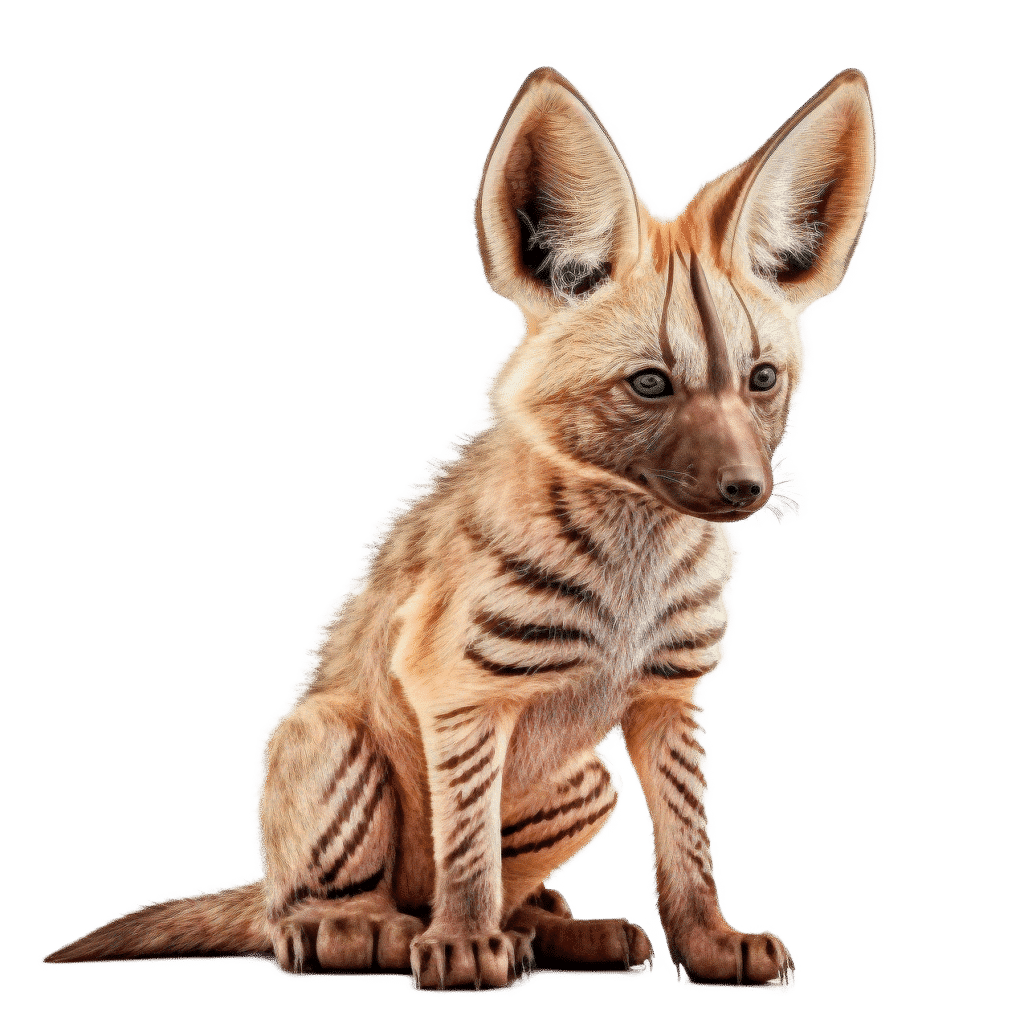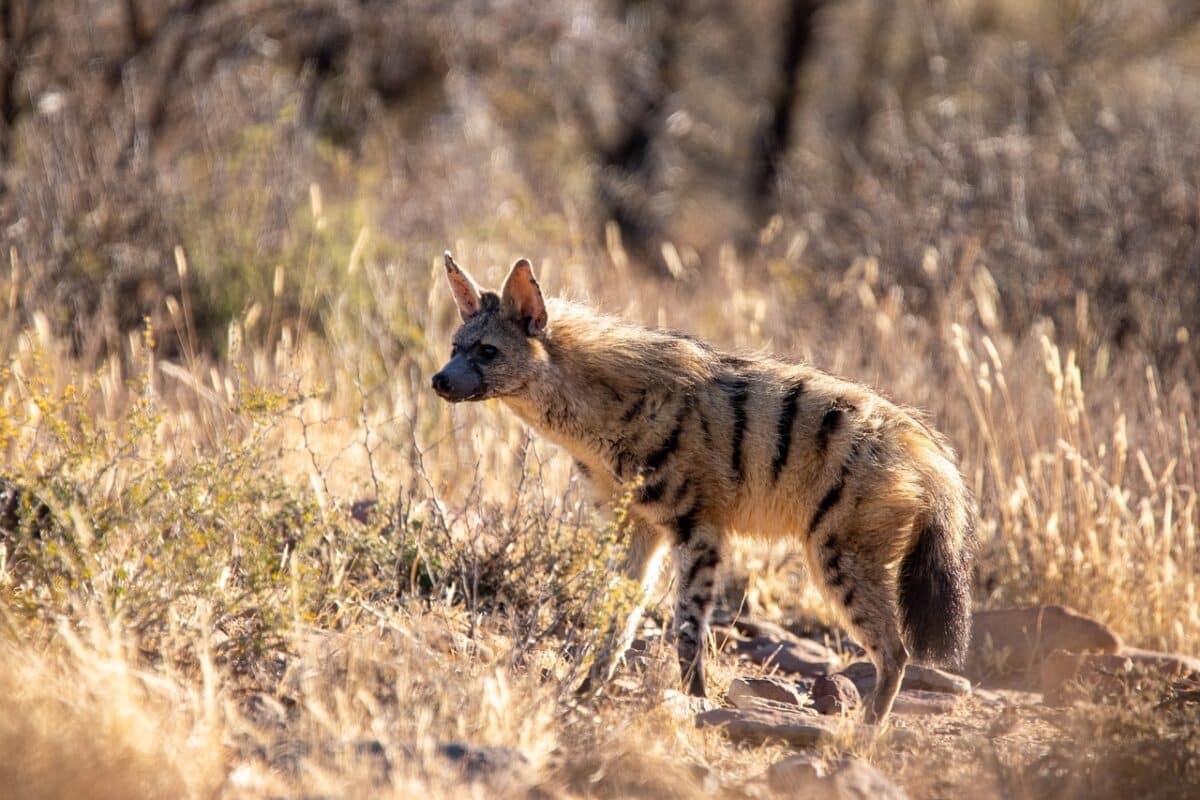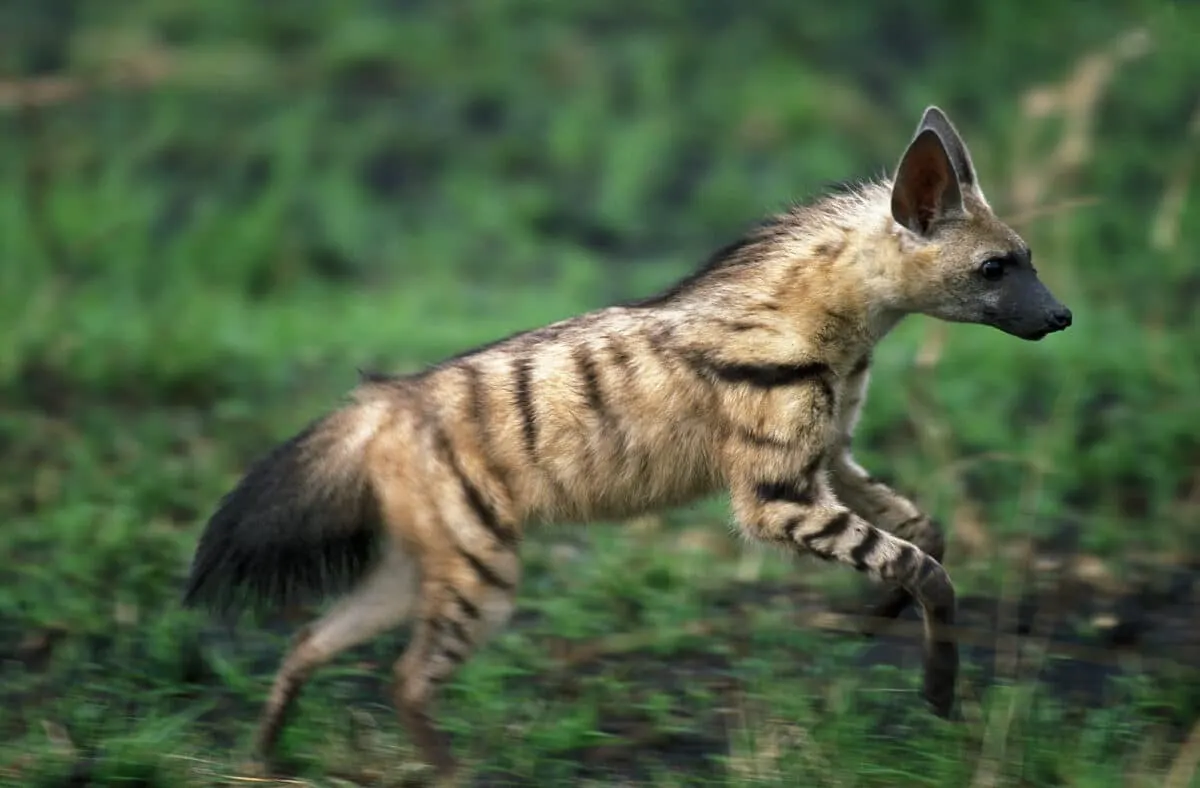The Aardwolf’s distinct appearance and fascinating behavior have made it a renowned species among hyenas. While often mistaken for other members of the hyena family, the Aardwolf possesses many different characteristics that set it apart from its relatives.
From its insectivorous diet to its distinctive striped coat, there is no denying that the Aardwolf is one of the fascinating creatures in the animal kingdom.
Distinctive Striped Coat and Fur Texture

The Aardwolf’s distinctive striped coat is a key feature that sets it apart from other members of the hyena family. The Aardwolf sports a striking black-and-white striped pattern, unlike other hyenas, which typically have spotted or solid-colored coats. These stripes run vertically down the Aardwolf’s back and are most pronounced on the shoulders and neck.
But the Aardwolf’s coat is more than just a flashy accessory – it also serves an essential purpose. The stripes provide camouflage within the tall grasses and shrubs of the Aardwolf’s habitat, allowing the animal to blend in and avoid predator detection. Furthermore, the Aardwolf’s densely packed fur has a wooly texture that insulates it from both hot and cold temperatures.
Size And Weight Compared To Other Hyenas
While the Aardwolf is a member of the hyena family, it is significantly smaller and lighter than its more well-known relatives. The average weight of adult individuals is usually within the range of 20 to 30 pounds, and their height at the shoulder typically measures between 16 to 20 inches.
In comparison, Spotted Hyenas can weigh up to 180 pounds, and Brown Hyenas can reach weights of up to 120 pounds. Despite its small size, the Aardwolf is incredibly agile and fast on its feet. It allows it to escape predators and catch the insects that comprise the bulk of its diet.
Jaw Structure And Teeth Adaptations For Insectivorous Diet
One of the fascinating aspects of the Aardwolf’s physical appearance is its unique jaw structure and teeth adaptations.
While other hyenas are known for their powerful jaws and bone-crushing teeth, the Aardwolf’s jaws are much more delicate in structure. The Aardwolf primarily feeds on termites, and it catches them with its lengthy and adhesive tongue, making up the majority of its diet. But catching termites is just half the battle – the Aardwolf must also be able to break through the insects’ hard exoskeletons to access their nutrient-rich insides.
The Aardwolf’s teeth are specially adapted to accomplish the task. Rather than sharp, pointed teeth like other carnivores, the Aardwolf’s teeth are flat and wide, allowing it to crush and grind up the tough termite shells. It, coupled with a digestive system that is highly specialized for breaking down insect material, makes the Aardwolf a true insectivorous specialist.
Insectivorous Diet Preference And Feeding Habits

The Aardwolf is a fascinating creature with an insectivorous diet preference that sets it apart from other members of the hyena family. These gentle creatures feed primarily on insects, particularly termites, comprising around 90% of their diet. They are known to extract termites from their mounds using their long, sticky tongue, which allows them to quickly latch onto prey and draw them out of their tunnels.
Interestingly, the Aardwolf can consume up to 300,000 termites in a single night, making them one of the most voracious insectivores in the animal kingdom. They spend their time foraging for food, and their dependence on termites leads them to spend most of their lives close to termite mounds.
Hunting Techniques And Strategies
Despite their relatively benign nature, Aardwolves have developed several effective hunting techniques that allow them to capitalize on their main prey source – termites. They are primarily nocturnal hunters who rely on their smelling sense and hearing to locate termite mounds and detect the movement of termites underground.
When Aardwolves find a termite mound, they use their extended and adhesive tongues to collect termites from the tunnels. They scratch the surface of bumps to create small openings, allowing them to remove more insects from deeper tunnels.
Interestingly, Aardwolves are not aggressive hunters and typically do not confront other animals. Instead, they prefer to scavenge for food or take advantage of opportunities when they present themselves.
Relationship With Termites And Their Mounds
Aardwolves have a unique relationship with termites and their mounds, which plays a significant role in their survival. Their intriguing relationship with termites and mounds highlights the complex interconnections between species in the natural world
Interestingly, Aardwolves are not considered a threat to termite colonies and are often considered essential contributors to the ecosystem’s health. They help to regulate the termite population, which can otherwise grow out of control and cause significant damage to vegetation.
Overall, the Aardwolf is a fascinating creature with a unique diet preference and hunting strategy. Their relationship with termites and their mounds is also intriguing and highlights the complex interconnections between species in the natural world.
Solitary Nature And Territorial Behavior
The Aardwolf is a solitary animal that typically lives alone or in pairs. They establish territories and mark them with their scent to ward off intruders. When threatened, they defend their colonies from 5 to 30 square kilometers. Despite their territorial nature, Aardwolves are not aggressive animals and prefer to flee from danger rather than fight.
For mutual protection, aardwolves share their territories with other animals, such as warthogs and ground squirrels. However, unlike other hyenas, Aardwolves are not known to form social groups or packs.
Communication Methods And Signaling In The Wild
Aardwolves use various methods to communicate with each other, including vocalizations, body language, and scent marking. Aardwolves emit a range of vocalizations, including grunts, growls, and barks, to signal danger, aggression, or contact.
In addition to vocalizations, Aardwolves communicate through body language such as tail flicking and ear positioning. They establish and maintain their territories by scent marking, and rubbing their anal glands on objects like rocks and bushes.
Interestingly, Aardwolves use their sense of smell to locate termite mounds, their primary food source. They use their long, sticky tongues to lap up termites, consuming up to 300,000 in one night!
Reproduction And Rearing Of Offspring
Aardwolves typically mate for life, with both parents taking an active role in caring for their young. After a gestation period of about three months, females give birth to litters of two to five pups.
The newborn pups have a soft, wooly coat and weigh around 200 to 300 grams. They are born blind and helpless and rely on their parents for warmth, protection, and milk. Parents regurgitate food and stay with pups until they’re strong enough to leave the den.
As a pup, they venture out of the den and accompany their parents on hunting trips. Weaning occurs at around six months old, and they achieve sexual maturity at roughly two years of age.
Closing Thoughts on the Aardwolf.
The Aardwolf is a creature that deserves more attention and recognition than it currently receives. The Aardwolf’s unique diet and fascinating behavior make it one of the most intriguing species in the animal kingdom.
By learning more about this fascinating creature, we can enhance the beauty of life on our planet. Be amazed by this incredible species as you explore the world of the Aardwolf.
Enjoyed this article? Read more amazing ones: Australian Labradoodles – Unleashing Love And Fluffiness!, Angora Ferrets – The Ultimate Guide to Care, Health, and Fun, and Angora Goat – A great farm edition.
Join our Forum for free today!

- Top 10 Savanna Animals - June 3, 2024
- American Bulldog – Cute Ball of Fear - May 31, 2024
- Mammoths Vs. Mastodons - May 31, 2024



